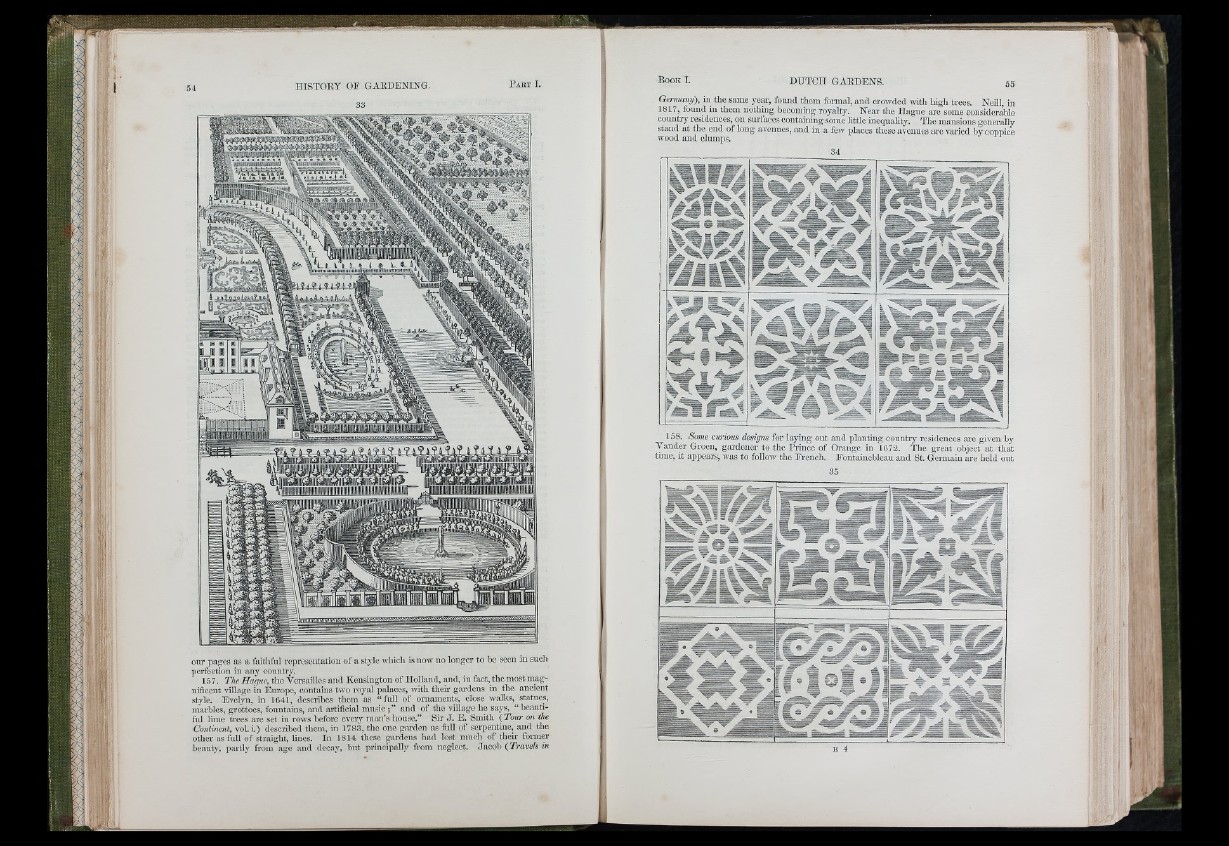
F i ;
à ,
IIISTOKY OF G«UtDENING.
33
ife « r r r r r iT « i,. i
.)•>.»< f i Mm
IsÆM
I I I
U rn
8 5 - 1
i l l i y e - a
our pages as a faithful representation of a style wliich is now no longer to be seen in such
perfection in any country.
157. The Hague, the Versailles and Kensington of Holland, and, in fact,^the most magnificent
village in Europe, contains two royal palaces, with their gardens in the ancient
style. Evelyn, in 1641, describes them as “ full of ornaments, close walks, statues,
marbles, grottoes, fountains, and artificial music ; ” and of the village he says, “ beautiful
lime trees are set in roAvs before every man’s house.” Sir J . E. Smith ( Tour on the
Continent, vol. i.) described them, in 1783, the one garden as full of serpentine, and the
other as full of straight, lines. In 1814 these gardens had lost much of their former
beauty, partly from ago and decay, but principally from neglect. JacolA (Travels m
Gei'inanij), iii the same year, found them formal, and crowded with higli trees. Neill, in
1817, found in them nothing becoming royalty. Near the Hague ai-e some considerable
country residences, on surfaces containing some little inequality. The mansions generally
stand at the end of long avenues, aud in a few places these avenues ai-e varied by coppice
wood and clumps.
lft¥ l
S 'iS f M i i l
m
'ê m
m m M M
158. Some curious designs for laying out and planting country residences are given by
Vandcr Grocn, gai-dener to the Prince of Orange in 1672. The great object at that
time, it appears, was to foUoAv the French. Fontainebleau and St. Germain are held out
35